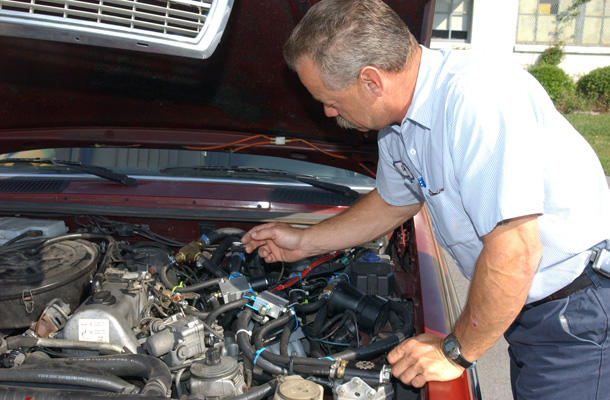The fuel system in a diesel engine performs the same functions as it does in gas-powered engines and consists of many of the same parts. After the fuel gets to the cylinders, however, there’s a difference in the four-stroke power cycle that converts it into the power to drive the vehicle. The next sectionprovides a closer look at that cycle.
The Diesel Four-Stroke Power Cycle
Although some smaller diesel engines (on motorcycles and marine engines, for instance) operate with two-stroke power cycles, most automotive diesel engines use a four-stroke power cycle, which is similar to, but not the same as, the power cycle of a gasoline engine (see Chapter 7). Here’show the diesel’s four-stroke power cycle works:
- Stroke 1: Intake stroke (see Figure 9-6). The piston descends, the intake valve opens, and air is drawn into the cylinder.
- Stroke 2: Compression stroke (see Figure 9-7). The intake and exhaust valves are closed as the piston moves upward and places the air under extreme pressure. As the pressure increases, the air heats up to the flash point (the point at which it causes the fuel to undergo spontaneous combustion). Just before the flash point is reached, fuel injectors spray fuel into the combustion chambers at the precise instant when ignition is to take place.
- Stroke 3: Power stroke (see Figure 9-8). With the intake valve and the exhaust valve closed, the fuel ignites, and combustion forces the piston down. This driving power is transmitted through the transmission and the rest of the drive train to the wheels, causing the vehicle to move.
- Stroke 4: Exhaust stroke (see Figure 9-9). The exhaust valve opens as the piston rises and pushes the burned gases out of the cylinder.

From Auto Repair for Dummies, copyright © 2009 by Wiley Publishing, Inc., Indianapolis, Indiana. Used by arrangement with John Wiley & Sons, Inc.










